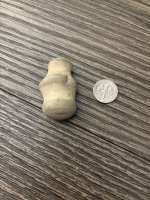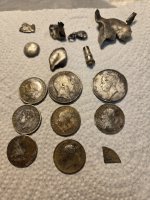Springfield
Silver Member
Mike - an excellent post from you as always. Before proceeding, please review my post #1909, bolded questions. These questions represent my only interest in this topic, and then, only with how the answers fit into a larger picture than the Jesuits in southern Arizona. I really don't care where the chips fall - I just want to feel as confident as possible with the results. I don't have a rigid position to defend.
Fortunately or not, my background compels me to question things rather rigorously. I have not claimed all the arguments presented here are fallacious, but some are. Conclusions drawn from assumptions, even well-presented ones that, nonetheless, can't be verified, are still grey. You and others have provided plenty of evidence to support your conclusions, but my original questions remain somewhat on the table - enough to keep probing, anyway. Oro claims that this forum is not a court of law, but I personally prefer due process over a lynching - riding a stolen horse doesn't necessarily mean you stole it, as things aren't always what they seem.
The most interesting aspect, to me, of the 82-pound story is the Mayan connection.
Fortunately or not, my background compels me to question things rather rigorously. I have not claimed all the arguments presented here are fallacious, but some are. Conclusions drawn from assumptions, even well-presented ones that, nonetheless, can't be verified, are still grey. You and others have provided plenty of evidence to support your conclusions, but my original questions remain somewhat on the table - enough to keep probing, anyway. Oro claims that this forum is not a court of law, but I personally prefer due process over a lynching - riding a stolen horse doesn't necessarily mean you stole it, as things aren't always what they seem.
The most interesting aspect, to me, of the 82-pound story is the Mayan connection.







